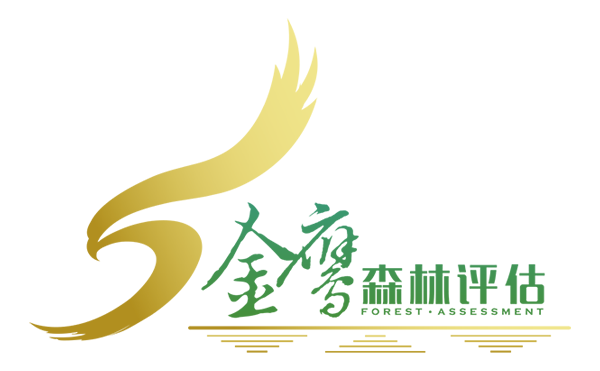發(fā)布:2025-06-07 瀏覽:0
自然資源資產(chǎn)綜合評(píng)估是生態(tài)文明建設(shè)的重要技術(shù)支撐,其核心在于通過系統(tǒng)化、定量化的評(píng)價(jià)手段,厘清自然資源資產(chǎn)的存量、質(zhì)量及價(jià)值流動(dòng)規(guī)律,為國(guó)土空間規(guī)劃、生態(tài)補(bǔ)償機(jī)制設(shè)計(jì)及自然資源資產(chǎn)離任審計(jì)提供科學(xué)依據(jù)。
The comprehensive evaluation of natural resource assets is an important technical support for the construction of ecological civilization. Its core lies in clarifying the stock, quality, and value flow laws of natural resource assets through systematic and quantitative evaluation methods, providing scientific basis for national spatial planning, ecological compensation mechanism design, and natural resource asset exit audit.
評(píng)估對(duì)象呈現(xiàn)多維度特征。從資源類型看,涵蓋土地、礦產(chǎn)、森林、水、濕地、海洋等全要素資源,需根據(jù)資源特性構(gòu)建差異化指標(biāo)。例如,耕地資源需重點(diǎn)評(píng)估土壤有機(jī)質(zhì)含量、耕作層厚度等生產(chǎn)性能指標(biāo);森林資源則需關(guān)注胸徑、樹高、蓄積量等生長(zhǎng)參數(shù)。從資產(chǎn)屬性看,需區(qū)分經(jīng)營(yíng)性資產(chǎn)與非經(jīng)營(yíng)性資產(chǎn),前者如探明儲(chǔ)量的礦產(chǎn)資源,后者如具有生態(tài)服務(wù)功能的水源涵養(yǎng)區(qū)。
The evaluation object presents multidimensional features. From the perspective of resource types, covering all factor resources such as land, minerals, forests, water, wetlands, and oceans, differentiated indicators need to be constructed based on resource characteristics. For example, farmland resources need to focus on evaluating production performance indicators such as soil organic matter content and tillage layer thickness; Forest resources need to pay attention to growth parameters such as breast height diameter, tree height, and stock volume. From the perspective of asset attributes, it is necessary to distinguish between operational assets and non operational assets. The former, such as mineral resources with proven reserves, and the latter, such as water conservation areas with ecological service functions.
價(jià)值核算體系是評(píng)估核心。需建立“三重價(jià)值”核算框架:經(jīng)濟(jì)價(jià)值通過市場(chǎng)法、收益法等工具量化,如采用影子價(jià)格法評(píng)估水資源經(jīng)濟(jì)產(chǎn)出;生態(tài)價(jià)值運(yùn)用生態(tài)系統(tǒng)生產(chǎn)總值(GEP)核算體系,將固碳釋氧、水土保持等生態(tài)服務(wù)轉(zhuǎn)化為貨幣價(jià)值;社會(huì)價(jià)值則通過條件價(jià)值法評(píng)估公眾支付意愿,如濕地公園的文化游憩價(jià)值。某流域綜合評(píng)估案例顯示,其GEP總值達(dá)到GDP的1.8倍,凸顯生態(tài)資產(chǎn)的經(jīng)濟(jì)外溢性。
The value accounting system is the core of evaluation. It is necessary to establish a "triple value" accounting framework: economic value is quantified through tools such as market method and income method, such as using shadow price method to evaluate the economic output of water resources; The ecological value utilizes the Gross Ecosystem Production (GEP) accounting system to convert ecological services such as carbon sequestration, oxygen release, and soil and water conservation into monetary value; Social value is evaluated through the contingent valuation method to assess public willingness to pay, such as the cultural and recreational value of wetland parks. A comprehensive assessment case of a certain watershed shows that its total GEP value has reached 1.8 times the GDP, highlighting the economic spillover of ecological assets.
空間異質(zhì)性評(píng)估是技術(shù)難點(diǎn)。需采用網(wǎng)格化評(píng)估方法,將評(píng)估區(qū)域劃分為1公里×1公里的評(píng)估單元,集成遙感監(jiān)測(cè)、地面觀測(cè)等多源數(shù)據(jù)。對(duì)于青藏高原等生態(tài)脆弱區(qū),需建立凍土活動(dòng)層厚度、植被凈初級(jí)生產(chǎn)力等特色指標(biāo);在長(zhǎng)三角城市群,則需重點(diǎn)評(píng)估建設(shè)用地?cái)U(kuò)張對(duì)耕地資源的占用效應(yīng)。某區(qū)域?qū)嵺`表明,網(wǎng)格化評(píng)估使資源時(shí)空分布精度提升。
The assessment of spatial heterogeneity is a technical challenge. Grid based evaluation method should be adopted to divide the evaluation area into assessment units of 1 kilometer by 1 kilometer, integrating multi-source data such as remote sensing monitoring and ground observation. For ecologically fragile areas such as the Qinghai Tibet Plateau, it is necessary to establish characteristic indicators such as the thickness of permafrost activity layer and net primary productivity of vegetation; In the Yangtze River Delta urban agglomeration, it is necessary to focus on evaluating the occupation effect of construction land expansion on arable land resources. Practice in a certain region has shown that grid based evaluation improves the accuracy of resource spatiotemporal distribution.
動(dòng)態(tài)監(jiān)測(cè)機(jī)制是評(píng)估保障。需構(gòu)建“天-空-地-網(wǎng)”一體化監(jiān)測(cè)網(wǎng)絡(luò),通過衛(wèi)星遙感實(shí)現(xiàn)季度級(jí)宏觀監(jiān)測(cè),無(wú)人機(jī)航測(cè)完成月度中觀核查,地面?zhèn)鞲衅骶W(wǎng)絡(luò)進(jìn)行實(shí)時(shí)微觀感知。對(duì)于稀土等戰(zhàn)略性礦產(chǎn),需部署激光誘導(dǎo)擊穿光譜(LIBS)技術(shù)實(shí)現(xiàn)原位快速檢測(cè)。某智慧監(jiān)測(cè)平臺(tái)已實(shí)現(xiàn)90%以上評(píng)估數(shù)據(jù)的自動(dòng)化采集,更新周期縮短。
The dynamic monitoring mechanism is an evaluation guarantee. It is necessary to build an integrated monitoring network of "sky air ground network", achieve quarterly macro monitoring through satellite remote sensing, complete monthly meso level verification through unmanned aerial vehicle aerial survey, and conduct real-time micro perception through ground sensor network. For strategic minerals such as rare earths, laser-induced breakdown spectroscopy (LIBS) technology needs to be deployed to achieve rapid in-situ detection. A certain smart monitoring platform has achieved automated collection of over 90% of evaluation data and shortened update cycles.
不確定性管理是評(píng)估關(guān)鍵。需建立誤差溯源模型,識(shí)別數(shù)據(jù)采集、模型假設(shè)等環(huán)節(jié)的不確定性來(lái)源。對(duì)于碳匯量核算,需通過蒙特卡洛模擬量化參數(shù)敏感性,將結(jié)果置信區(qū)間控制在±15%以內(nèi)。在資源價(jià)值折現(xiàn)率選擇上,需構(gòu)建無(wú)風(fēng)險(xiǎn)利率、風(fēng)險(xiǎn)溢價(jià)雙因子模型,避免主觀判斷偏差。
Uncertainty management is key to evaluation. An error traceability model needs to be established to identify sources of uncertainty in data collection, model assumptions, and other processes. For carbon sequestration accounting, it is necessary to quantify parameter sensitivity through Monte Carlo simulation and control the confidence interval of the results within ± 15%. In selecting the discount rate for resource value, it is necessary to construct a two factor model of risk-free interest rate and risk premium to avoid subjective judgment bias.

成果應(yīng)用呈現(xiàn)多場(chǎng)景特征。在國(guó)土空間規(guī)劃中,評(píng)估結(jié)果可支撐“三區(qū)三線”劃定,某城市實(shí)踐表明,依據(jù)資源承載力評(píng)估調(diào)整用地布局后,生態(tài)紅線沖突率下降。在生態(tài)補(bǔ)償方面,需建立“受益者付費(fèi)、保護(hù)者受償”的橫向補(bǔ)償機(jī)制,某流域上下游補(bǔ)償標(biāo)準(zhǔn)即以水質(zhì)改善量、森林蓄積量增量為核心參數(shù)。
The application of achievements presents multi scenario characteristics. In the national spatial planning, the evaluation results can support the delineation of the "three zones and three lines". The practice of a certain city has shown that after adjusting the land layout based on the assessment of resource carrying capacity, the conflict rate of ecological red lines has decreased. In terms of ecological compensation, it is necessary to establish a horizontal compensation mechanism of "beneficiaries pay, protectors are compensated". The compensation standards for upstream and downstream of a certain watershed are based on the core parameters of water quality improvement and forest accumulation increment.
隨著數(shù)字孿生技術(shù)的發(fā)展,自然資源資產(chǎn)評(píng)估正邁向智能化階段。通過構(gòu)建三維實(shí)景模型,實(shí)現(xiàn)資產(chǎn)變化的可視化推演;利用區(qū)塊鏈技術(shù)確保評(píng)估數(shù)據(jù)的不可篡改性。某新型平臺(tái)已實(shí)現(xiàn)評(píng)估流程的自動(dòng)化與評(píng)估報(bào)告的智能生成,工作效率提升。未來(lái),人工智能將深度融入評(píng)估體系,通過機(jī)器學(xué)習(xí)持續(xù)優(yōu)化核算模型,推動(dòng)自然資源資產(chǎn)管理向精準(zhǔn)化、智慧化方向演進(jìn)。
With the development of digital twin technology, natural resource asset evaluation is moving towards an intelligent stage. By constructing a three-dimensional real-life model, the visualization and deduction of asset changes can be achieved; Using blockchain technology to ensure the immutability of evaluation data. A new platform has achieved automation of the evaluation process and intelligent generation of evaluation reports, improving work efficiency. In the future, artificial intelligence will be deeply integrated into the evaluation system, continuously optimizing accounting models through machine learning, and promoting the evolution of natural resource asset management towards precision and intelligence.
本文由森林資源資產(chǎn)評(píng)估友情奉獻(xiàn).更多有關(guān)的知識(shí)請(qǐng)點(diǎn)擊:http://www.kkpcgoldfoam.com我們將會(huì)對(duì)您提出的疑問進(jìn)行詳細(xì)的解答,歡迎您登錄網(wǎng)站留言.
This article is contributed by the Friendship Contribution of Forest Resource Asset Evaluation For more information, please click: http://www.kkpcgoldfoam.com We will provide detailed answers to your questions. You are welcome to log in to our website and leave a message
- 森林資源資產(chǎn)評(píng)估:司法拍賣涉及森林資源資產(chǎn)評(píng)估(天然保護(hù)林、中齡林)如何評(píng)估? 2025/11/22
- 林業(yè)資產(chǎn)價(jià)格評(píng)估:全類型自然資源資產(chǎn)價(jià)值核算的深圳實(shí)踐 2025/11/20
- 林木資產(chǎn)價(jià)格評(píng)估:森林資源價(jià)值核算助力生態(tài)文明建設(shè) 2025/11/19
- 森林資源資產(chǎn)評(píng)估:林地資源生態(tài)產(chǎn)品價(jià)值核算總體目標(biāo)是什么? 2025/11/18
- 林業(yè)資產(chǎn)價(jià)格評(píng)估:七十六條中的“林木價(jià)值”如何確定? 2025/11/17
- 我國(guó)森林、草原與濕地資源管理的歷史沿革 2025/11/15




















